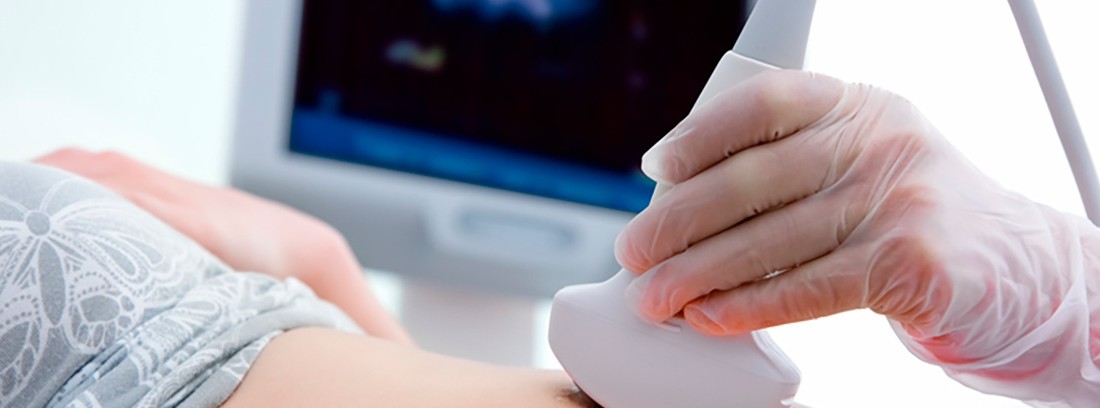Fibroids

They are the most common benign tumors of the female reproductive system.
What is the uterus like?
It is made up of three different layers:
- The outermost is the serous, which is a very thin layer dependent on the peritoneum, which covers the entire outer part of the uterus and which facilitates contact between the different abdominal organs as well as having a defense function.
- The middle layer of the uterus is the myometrium. It is made up of smooth muscle fibers that are involuntarily controlled. Its basic function is to contract at the time of delivery to expel the fetus.
- Finally the endometrium It is the innermost mucous layer of the uterus that develops each cycle to house the embryo and, if pregnancy does not occur, it sloughs off, giving rise to menstruation.
How are fibroids produced?
Fibroids originate in the smooth muscle cells of the myometrium. They can be single or multiple and the exact cause of their development is not known. Its frequency is estimated between a 20 and 25% of women between 30 and 50 years. Its growth is facilitated by the action of whats estrogens and progesterone, the female sex hormones produced in the ovaries and therefore are usually reduced in size. They are two to five times more common in black women than in white women. There is a clear hereditary factor that also influences its formation. It is common that fibroids are not unique but that several fibroids appear in the same woman. Fibroids are benign but approximately 0.01% of cases can degenerate into a malignant tumor called leiomyosarcoma. This possibility should be considered in women with very rapidly growing fibroids or in postmenopausal women with a growing fibroid.
Classification of fibroids
There are different types of fibroids depending on their location.
- Subserous, which appear in 55% of cases. These fibroids are located below the serous layer of the uterus, the outermost layer, and therefore grow towards the outside of the womb.
- Fibroids intramural are those that are located within the wall of the womb, that is, in the same thickness of the myometrium and account for 40% of fibroids.
- Submucosal fibroids They are those that are located below the endometrium and therefore protrude into the uterine cavity. These fibroids represent 5% of the total.
Despite this classification, fibroids are frequently of a mixed type and may have an intramural and subserous or submucosal component. Both submucosal and subserous fibroids can be pedunculated, that is, they join the uterus with a narrow stalk, or sessile, which are those with a wide implantation base where they join the uterus.
Symptoms
Most fibroids do not produce any symptoms. But approximately a third of patients with fibroids present some type of clinic that is usually:
- Abdominal mass: It can cause a sensation of tightness in the pelvis, an increase in the frequency of urination due to compression of the bladder of urine, or low back pain due to compression of nerve roots.
- very abundant: women with fibroids may have longer periods with a greater amount of loss than those without fibroids. Sometimes it can cause excessive loss anemia. These bleeds tend to occur more in women who have submucosal fibroids.
- fibroids have been associated with repeated miscarriages in some women or with difficulty getting pregnant. In women who manage to carry out their pregnancy despite fibroids, severe and recurrent pain may occur during pregnancy due to the very rapid growth of fibroids. They also have a higher rate of threats of preterm labor and preterm births. There is also in these cases a higher probability of breech or transverse presentation of the fetuses.
Diagnosis
The suspected diagnosis can be very easy with a simple examination by the gynecologist with a vaginal examination. To confirm the diagnosis, the first test to perform is a ultrasound, which is usually vaginally but sometimes also abdominally. In other cases, an MRI or CT scan is also performed to distinguish other lesions that may create confusion on ultrasound.
For the study of submucosal fibroids, a diagnostic hysteroscopy or a
Treatment options depend on the size, location, symptoms, and possible desire to become pregnant. If the fibroid is small and asymptomatic, it may simply require controls to rule out excessive growth.In case they show symptoms or grow excessively, it is usually get surgical treatment. The medical treatment of fibroids is usually very ineffective but in some cases, with a previous evaluation of the case and a good explanation by the doctor of the expectations it can be a valid option.
Surgical treatment may consist of a myomectomy, that is, the removal of the fibroid, or in a hysterectomy, remove the entire womb, in cases where the patient does not want to have more children. The approach can be abdominal by laparoscopy or laparotomy or by hysteroscopy depending on the location of the fibroid. Embolization or ultrasound treatments are still beginning.
Do you know the new insurance Sap? If you are concerned about the financial repercussions that your admission or that of a family member may have for you, the new MAPFRE hospitalization indemnity insurance can give you peace of mind.
This insurance guarantees you a daily remuneration in the event that the insured person has a hospitalization.
(Updated at Apr 14 / 2024)